Search for Indicators
All Data
Indicator Gauge Icon Legend
Legend Colors
Red is bad, green is good, blue is not statistically different/neutral.
Compared to Distribution
 the value is in the best half of communities.
the value is in the best half of communities.
 the value is in the 2nd worst quarter of communities.
the value is in the 2nd worst quarter of communities.
 the value is in the worst quarter of communities.
the value is in the worst quarter of communities.
Compared to Target
 meets target;
meets target;  does not meet target.
does not meet target.
Compared to a Single Value
 lower than the comparison value;
lower than the comparison value;
 higher than the comparison value;
higher than the comparison value;
 not statistically different from comparison value.
not statistically different from comparison value.
Trend

 non-significant change over time;
non-significant change over time; 
 significant change over time;
significant change over time;  no change over time.
no change over time.
Compared to Prior Value
 higher than the previous measurement period;
higher than the previous measurement period;
 lower than the previous measurement period;
lower than the previous measurement period;
 no statistically different change from previous measurement period.
no statistically different change from previous measurement period.
Public Health Preparedness Region: Kansas City Metro
Health / Alcohol & Drug Use
Value
Compared to:
Public Health Preparedness Region: Kansas City Metro Percent Medicare Part D Beneficiaries Having Daily Opioid Dosage >= 50 MME
Public Health Preparedness Region: Kansas City Metro Percent Medicare Part D Beneficiaries Having Daily Opioid Dosage >= 50 MME
30.1%
(2017)
Compared to:




KS Value
(33.3%)
The regional value is compared to the Kansas State value.

Prior Value
(33.3%)
Prior Value compares a measured value with the previously measured value. Confidence intervals were not taken into account in determining the direction of the comparison.

Trend
This comparison measures the indicator’s values over multiple time periods.<br>The Mann-Kendall Test for Statistical Significance is used to evaluate the trend<br>over 4 to 10 periods of measure, subject to data availability and comparability.
Public Health Preparedness Region: Kansas City Metro Percent Medicare Part D Beneficiaries Having Daily Opioid Dosage >= 90 MME
Public Health Preparedness Region: Kansas City Metro Percent Medicare Part D Beneficiaries Having Daily Opioid Dosage >= 90 MME
15.0%
(2017)
Compared to:




KS Value
(16.6%)
The regional value is compared to the Kansas State value.

Prior Value
(16.5%)
Prior Value compares a measured value with the previously measured value. Confidence intervals were not taken into account in determining the direction of the comparison.

Trend
This comparison measures the indicator’s values over multiple time periods.<br>The Mann-Kendall Test for Statistical Significance is used to evaluate the trend<br>over 4 to 10 periods of measure, subject to data availability and comparability.
Public Health Preparedness Region: Kansas City Metro Percent Medicare Part D Beneficiaries Receiving Both Long & Short Acting Opioids
Public Health Preparedness Region: Kansas City Metro Percent Medicare Part D Beneficiaries Receiving Both Long & Short Acting Opioids
7.2%
(2017)
Compared to:




KS Value
(7.6%)
The regional value is compared to the Kansas State value.

Prior Value
(8.0%)
Prior Value compares a measured value with the previously measured value. Confidence intervals were not taken into account in determining the direction of the comparison.

Trend
This comparison measures the indicator’s values over multiple time periods.<br>The Mann-Kendall Test for Statistical Significance is used to evaluate the trend<br>over 4 to 10 periods of measure, subject to data availability and comparability.
Public Health Preparedness Region: Kansas City Metro Percent Medicare Part D Beneficiaries Receiving Opioid & Benzodiazepine Prescriptions
Public Health Preparedness Region: Kansas City Metro Percent Medicare Part D Beneficiaries Receiving Opioid & Benzodiazepine Prescriptions
15.1%
(2017)
Compared to:




KS Value
(15.1%)
The regional value is compared to the Kansas State value.

Prior Value
(17.6%)
Prior Value compares a measured value with the previously measured value. Confidence intervals were not taken into account in determining the direction of the comparison.

Trend
This comparison measures the indicator’s values over multiple time periods.<br>The Mann-Kendall Test for Statistical Significance is used to evaluate the trend<br>over 4 to 10 periods of measure, subject to data availability and comparability.
Public Health Preparedness Region: Kansas City Metro Percent of Medicare Part D Beneficiaries Receiving Opioids Supply Greater Than 10-Days
Public Health Preparedness Region: Kansas City Metro Percent of Medicare Part D Beneficiaries Receiving Opioids Supply Greater Than 10-Days
33.6%
(2017)
Compared to:




KS Value
(37.8%)
The regional value is compared to the Kansas State value.

Prior Value
(43.3%)
Prior Value compares a measured value with the previously measured value. Confidence intervals were not taken into account in determining the direction of the comparison.

Trend
This comparison measures the indicator’s values over multiple time periods.<br>The Mann-Kendall Test for Statistical Significance is used to evaluate the trend<br>over 4 to 10 periods of measure, subject to data availability and comparability.
Public Health Preparedness Region: Kansas City Metro Percent of Medicare Part D Claims With Opioid Prescriptions Written For More Than 10-Day Supply
Public Health Preparedness Region: Kansas City Metro Percent of Medicare Part D Claims With Opioid Prescriptions Written For More Than 10-Day Supply
69.2%
(2017)
Compared to:




KS Value
(71.0%)
The regional value is compared to the Kansas State value.

Prior Value
(68.8%)
Prior Value compares a measured value with the previously measured value. Confidence intervals were not taken into account in determining the direction of the comparison.

Trend
This comparison measures the indicator’s values over multiple time periods.<br>The Mann-Kendall Test for Statistical Significance is used to evaluate the trend<br>over 4 to 10 periods of measure, subject to data availability and comparability.
Public Health Preparedness Region: Kansas City Metro
Health / Cancer
Value
Compared to:
Public Health Preparedness Region: Kansas City Metro Colorectal Cancer Rate
Public Health Preparedness Region: Kansas City Metro Colorectal Cancer Rate
35.2
Per 100,000 population
(2014-2018)
Compared to:




KS Value
(39.2)
The regional value is compared to the Kansas State value.

Prior Value
(35.1)
Prior Value compares a measured value with the previously measured value. Confidence intervals were taken into account in determining the direction of the comparison.

Trend
This comparison measures the indicator’s values over multiple time periods.<br>The Mann-Kendall Test for Statistical Significance is used to evaluate the trend<br>over 4 to 10 periods of measure, subject to data availability and comparability.
Public Health Preparedness Region: Kansas City Metro Female Breast Cancer Rate
Public Health Preparedness Region: Kansas City Metro Female Breast Cancer Rate
73.4
Per 100,000 female population
(2014-2018)
Compared to:




KS Value
(129.0)
The regional value is compared to the Kansas State value.

Prior Value
(135.1)
Prior Value compares a measured value with the previously measured value. Confidence intervals were not taken into account in determining the direction of the comparison.

Trend
This comparison measures the indicator’s values over multiple time periods.<br>The Mann-Kendall Test for Statistical Significance is used to evaluate the trend<br>over 4 to 10 periods of measure, subject to data availability and comparability.
Public Health Preparedness Region: Kansas City Metro Lung & Bronchus Cancer Rate
Public Health Preparedness Region: Kansas City Metro Lung & Bronchus Cancer Rate
50.8
Per 100,000 population
(2014-2018)
Compared to:




KS Value
(54.0)
The regional value is compared to the Kansas State value.

Prior Value
(51.5)
Prior Value compares a measured value with the previously measured value. Confidence intervals were not taken into account in determining the direction of the comparison.

Trend
This comparison measures the indicator’s values over multiple time periods.<br>The Mann-Kendall Test for Statistical Significance is used to evaluate the trend<br>over 4 to 10 periods of measure, subject to data availability and comparability.
Public Health Preparedness Region: Kansas City Metro Male Prostate Cancer Rate
Public Health Preparedness Region: Kansas City Metro Male Prostate Cancer Rate
102.1
Per 100,000 male population
(2014-2018)
Compared to:




KS Value
(109.8)
The regional value is compared to the Kansas State value.

Prior Value
(95.7)
Prior Value compares a measured value with the previously measured value. Confidence intervals were taken into account in determining the direction of the comparison.

Trend
This comparison measures the indicator’s values over multiple time periods.<br>The Mann-Kendall Test for Statistical Significance is used to evaluate the trend<br>over 4 to 10 periods of measure, subject to data availability and comparability.
Public Health Preparedness Region: Kansas City Metro
Health / Diabetes
Value
Compared to:
Public Health Preparedness Region: Kansas City Metro Diabetes Hospital Admission Rate
Public Health Preparedness Region: Kansas City Metro Diabetes Hospital Admission Rate
14.4
Per 10,000 population
(2018-2020)
Compared to:



KS Value
(16.5)
The regional value is compared to the Kansas State value.

Prior Value
(32.3)
Prior Value compares a measured value with the previously measured value. Confidence intervals were taken into account in determining the direction of the comparison.
Public Health Preparedness Region: Kansas City Metro
Health / Health Care Access & Quality
Value
Compared to:
Public Health Preparedness Region: Kansas City Metro Average Monthly WIC Participation per 1,000 population
Public Health Preparedness Region: Kansas City Metro Average Monthly WIC Participation per 1,000 population
11.8
Average cases per 1,000 population
(2023)
Compared to:





KS Value
(16.0)
The regional value is compared to the Kansas State value.

US Value
(22.4 in 2017)
The Kansas State value is compared to the U.S. value.

Prior Value
(11.7)
Prior Value compares a measured value with the previously measured value. Confidence intervals were not taken into account in determining the direction of the comparison.

Trend
This comparison measures the indicator’s values over multiple time periods.<br>The Mann-Kendall Test for Statistical Significance is used to evaluate the trend<br>over 4 to 10 periods of measure, subject to data availability and comparability.
Public Health Preparedness Region: Kansas City Metro Staffed Hospital Bed Ratio
Public Health Preparedness Region: Kansas City Metro Staffed Hospital Bed Ratio
2.8
Beds per 1,000 population
(2021)
Compared to:




KS Value
(2.9)
The regional value is compared to the Kansas State value.

Prior Value
(2.8)
Prior Value compares a measured value with the previously measured value. Confidence intervals were not taken into account in determining the direction of the comparison.

Trend
This comparison measures the indicator’s values over multiple time periods.<br>The Mann-Kendall Test for Statistical Significance is used to evaluate the trend<br>over 4 to 10 periods of measure, subject to data availability and comparability.
Public Health Preparedness Region: Kansas City Metro
Health / Heart Disease & Stroke
Value
Compared to:
Public Health Preparedness Region: Kansas City Metro Acute Cerebrovascular (Stroke) Disease Hospital Admission Rate
Public Health Preparedness Region: Kansas City Metro Acute Cerebrovascular (Stroke) Disease Hospital Admission Rate
11.8
Per 10,000 population
(2018-2020)
Compared to:



KS Value
(11.6)
The regional value is compared to the Kansas State value.

Prior Value
(12.4)
Prior Value compares a measured value with the previously measured value. Confidence intervals were taken into account in determining the direction of the comparison.
Public Health Preparedness Region: Kansas City Metro Congestive Heart Failure Hospital Admission Rate
Public Health Preparedness Region: Kansas City Metro Congestive Heart Failure Hospital Admission Rate
26.2
Per 10,000 population
(2018-2020)
Compared to:



KS Value
(24.1)
The regional value is compared to the Kansas State value.

Prior Value
(27.0)
Prior Value compares a measured value with the previously measured value. Confidence intervals were taken into account in determining the direction of the comparison.
Public Health Preparedness Region: Kansas City Metro Heart Disease Hospital Admission Rate
Public Health Preparedness Region: Kansas City Metro Heart Disease Hospital Admission Rate
122.4
Per 10,000 population
(2018-2020)
Compared to:



KS Value
(111.9)
The regional value is compared to the Kansas State value.

Prior Value
(128.2)
Prior Value compares a measured value with the previously measured value. Confidence intervals were taken into account in determining the direction of the comparison.
Public Health Preparedness Region: Kansas City Metro Percent of Adults with Diagnosed Hypertension
Public Health Preparedness Region: Kansas City Metro Percent of Adults with Diagnosed Hypertension
29.1%
(2021)
Compared to:






KS Value
(34.3%)
The regional value is compared to the Kansas State value.

US Value
(32.3% in 2017)
The regional value is compared to the national value.

Prior Value
(27.5%)
Prior Value compares a measured value with the previously measured value. Confidence intervals were taken into account in determining the direction of the comparison.

Trend
This comparison measures the indicator’s values over multiple time periods.<br>The Mann-Kendall Test for Statistical Significance is used to evaluate the trend<br>over 4 to 10 periods of measure, subject to data availability and comparability.

HP 2030 Target
(27.7%)
Public Health Preparedness Region: Kansas City Metro
Health / Immunizations & Infectious Diseases
Value
Compared to:
Public Health Preparedness Region: Kansas City Metro Percent of Infants Fully Immunized at 24 Months
Public Health Preparedness Region: Kansas City Metro Percent of Infants Fully Immunized at 24 Months
66.1%
(2017-2018)
Compared to:




KS Value
(71.1%)
The regional value is compared to the Kansas State value.

Prior Value
(66.9%)
Prior Value compares a measured value with the previously measured value. Confidence intervals were taken into account in determining the direction of the comparison.

Trend
This comparison measures the indicator’s values over multiple time periods.<br>The Mann-Kendall Test for Statistical Significance is used to evaluate the trend<br>over 4 to 10 periods of measure, subject to data availability and comparability.
Public Health Preparedness Region: Kansas City Metro
Health / Maternal, Fetal & Infant Health
Value
Compared to:
Public Health Preparedness Region: Kansas City Metro Infant Mortality Rate
Public Health Preparedness Region: Kansas City Metro Infant Mortality Rate
5.0
Deaths per 1,000 live births
(2017-2021)
Compared to:






KS Value
(5.9)
The regional value is compared to the Kansas State value.

US Value
(5.9 in 2012-2016)
The regional value is compared to the most current national value.

Prior Value
(5.1)
Prior Value compares a measured value with the previously measured value. Confidence intervals were taken into account in determining the direction of the comparison.

Trend
This comparison measures the indicator’s values over multiple time periods.<br>The Mann-Kendall Test for Statistical Significance is used to evaluate the trend<br>over 4 to 10 periods of measure, subject to data availability and comparability.

HP 2030 Target
(5.0)
Public Health Preparedness Region: Kansas City Metro Number of Births per 1,000 Population
Public Health Preparedness Region: Kansas City Metro Number of Births per 1,000 Population
11.6
Births per 1,000 population
(2019-2021)
Compared to:





KS Value
(11.9)
The regional value is compared to the Kansas State value.

US Value
(12.5 in 2013-2015)
The Kansas State value is compared to the U.S. value. Three-year time period for this comparison is 2013-2015, this is the most current US data at this time.

Prior Value
(11.8)
Prior Value compares a measured value with the previously measured value. Confidence intervals were taken into account in determining the direction of the comparison.

Trend
This comparison measures the indicator’s values over multiple time periods.<br>The Mann-Kendall Test for Statistical Significance is used to evaluate the trend<br>over 4 to 10 periods of measure, subject to data availability and comparability.
Public Health Preparedness Region: Kansas City Metro Percent of all Births Occurring to Teens (15-19)
Public Health Preparedness Region: Kansas City Metro Percent of all Births Occurring to Teens (15-19)
3.4%
(2019-2021)
Compared to:





KS Value
(5.0%)
The regional value is compared to the Kansas State value.

US Value
(18.8% in 2015-2017)
The regional value is compared to the most current single year national value.

Prior Value
(3.7%)
Prior Value compares a measured value with the previously measured value. Confidence intervals were taken into account in determining the direction of the comparison.

Trend
This comparison measures the indicator’s values over multiple time periods.<br>The Mann-Kendall Test for Statistical Significance is used to evaluate the trend<br>over 4 to 10 periods of measure, subject to data availability and comparability.
Public Health Preparedness Region: Kansas City Metro Percent of Births Occurring to Unmarried Women
Public Health Preparedness Region: Kansas City Metro Percent of Births Occurring to Unmarried Women
30.0%
(2019-2021)
Compared to:





KS Value
(36.4%)
The regional value is compared to the Kansas State value.

US Value
(39.8% in 2015-2017)
The regional value is compared to the most current single year national value.

Prior Value
(30.4%)
Prior Value compares a measured value with the previously measured value. Confidence intervals were taken into account in determining the direction of the comparison.

Trend
This comparison measures the indicator’s values over multiple time periods.<br>The Mann-Kendall Test for Statistical Significance is used to evaluate the trend<br>over 4 to 10 periods of measure, subject to data availability and comparability.
Public Health Preparedness Region: Kansas City Metro Percent of births Where Mother Smoked During Pregnancy
Public Health Preparedness Region: Kansas City Metro Percent of births Where Mother Smoked During Pregnancy
3.8%
(2019-2021)
Compared to:





KS Value
(7.9%)
The regional value is compared to the Kansas State value.

US Value
(6.9% in 2015-2017)
The regional value is compared to the most current single year national value.

Prior Value
(4.5%)
Prior Value compares a measured value with the previously measured value. Confidence intervals were taken into account in determining the direction of the comparison.

Trend
This comparison measures the indicator’s values over multiple time periods.<br>The Mann-Kendall Test for Statistical Significance is used to evaluate the trend<br>over 4 to 10 periods of measure, subject to data availability and comparability.
Public Health Preparedness Region: Kansas City Metro Percent of Births Where Prenatal Care began in First Trimester
Public Health Preparedness Region: Kansas City Metro Percent of Births Where Prenatal Care began in First Trimester
83.1%
(2019-2021)
Compared to:






KS Value
(81.3%)
The regional value is compared to the Kansas State value.

US Value
(77.3% in 2015-2017)
The regional value is compared to the most current single year national value.

Prior Value
(83.2%)
Prior Value compares a measured value with the previously measured value. Confidence intervals were taken into account in determining the direction of the comparison.

Trend
This comparison measures the indicator’s values over multiple time periods.<br>The Mann-Kendall Test for Statistical Significance is used to evaluate the trend<br>over 4 to 10 periods of measure, subject to data availability and comparability.

HP 2030 Target
(80.5%)
Public Health Preparedness Region: Kansas City Metro Percent of Births with Inadequate Birth Spacing
Public Health Preparedness Region: Kansas City Metro Percent of Births with Inadequate Birth Spacing
8.3%
(2019-2021)
Compared to:





KS Value
(10.2%)
The regional value is compared to the Kansas State value.

US Value
(11.8% in 2015-2017)
The regional value is compared to the most current single year national value.

Prior Value
(8.2%)
Prior Value compares a measured value with the previously measured value. Confidence intervals were taken into account in determining the direction of the comparison.

Trend
This comparison measures the indicator’s values over multiple time periods.<br>The Mann-Kendall Test for Statistical Significance is used to evaluate the trend<br>over 4 to 10 periods of measure, subject to data availability and comparability.
Public Health Preparedness Region: Kansas City Metro Percent of Births with Low Birth Weight
Public Health Preparedness Region: Kansas City Metro Percent of Births with Low Birth Weight
7.4%
(2019-2021)
Compared to:





KS Value
(7.4%)
The regional value is compared to the Kansas State value.

US Value
(8.3% in 2015-2017)
The regional value is compared to the most current single year national value.

Prior Value
(7.4%)
Prior Value compares a measured value with the previously measured value. Confidence intervals were taken into account in determining the direction of the comparison.

Trend
This comparison measures the indicator’s values over multiple time periods.<br>The Mann-Kendall Test for Statistical Significance is used to evaluate the trend<br>over 4 to 10 periods of measure, subject to data availability and comparability.
Public Health Preparedness Region: Kansas City Metro Percent of WIC Mothers Breastfeeding Exclusively
Public Health Preparedness Region: Kansas City Metro Percent of WIC Mothers Breastfeeding Exclusively
17.7%
(2023)
Compared to:




KS Value
(18.2%)
The regional value is compared to the Kansas State value.

Prior Value
(15.5%)
Prior Value compares a measured value with the previously measured value. Confidence intervals were not taken into account in determining the direction of the comparison.

Trend
This comparison measures the indicator’s values over multiple time periods.<br>The Mann-Kendall Test for Statistical Significance is used to evaluate the trend<br>over 4 to 10 periods of measure, subject to data availability and comparability.
Public Health Preparedness Region: Kansas City Metro Percentage of Premature Births
Public Health Preparedness Region: Kansas City Metro Percentage of Premature Births
9.7%
(2019-2021)
Compared to:






KS Value
(10.0%)
The regional value is compared to the Kansas State value.

US Value
(9.9% in 2015-2017)
The regional value is compared to the most current single year national value.

Prior Value
(9.5%)
Prior Value compares a measured value with the previously measured value. Confidence intervals were taken into account in determining the direction of the comparison.

Trend
This comparison measures the indicator’s values over multiple time periods.<br>The Mann-Kendall Test for Statistical Significance is used to evaluate the trend<br>over 4 to 10 periods of measure, subject to data availability and comparability.

HP 2030 Target
(9.4%)
Public Health Preparedness Region: Kansas City Metro
Health / Medications & Prescriptions
Value
Compared to:
Public Health Preparedness Region: Kansas City Metro Poisoning (Drugs) Hospital Admission Rate
Public Health Preparedness Region: Kansas City Metro Poisoning (Drugs) Hospital Admission Rate
3.4
Per 10,000 population
(2018-2020)
Compared to:



KS Value
(3.5)
The regional value is compared to the Kansas State value.

Prior Value
(3.6)
Prior Value compares a measured value with the previously measured value. Confidence intervals were taken into account in determining the direction of the comparison.
Public Health Preparedness Region: Kansas City Metro
Health / Mental Health & Mental Disorders
Value
Compared to:
Public Health Preparedness Region: Kansas City Metro Mental Behavior Hospital Admissions Rate
Public Health Preparedness Region: Kansas City Metro Mental Behavior Hospital Admissions Rate
71.8
Per 10,000 population
(2018-2020)
Compared to:



KS Value
(70.6)
The regional value is compared to the Kansas State value.

Prior Value
(72.1)
Prior Value compares a measured value with the previously measured value. Confidence intervals were taken into account in determining the direction of the comparison.
Public Health Preparedness Region: Kansas City Metro
Health / Mortality Data
Value
Compared to:
Public Health Preparedness Region: Kansas City Metro Age-adjusted Alzheimer's Disease Mortality Rate per 100,000 population
Public Health Preparedness Region: Kansas City Metro Age-adjusted Alzheimer's Disease Mortality Rate per 100,000 population
24.3
Deaths per 100,000 population
(2019-2021)
Compared to:





KS Value
(23.1)
The regional value is compared to the Kansas State value.

US Value
(31.0 in 2015-2017)
The Kansas State value is compared to the U.S. value. U.S. comparison value is taken from the most recent single year (2017) NCHS preliminary data report.

Prior Value
(22.7)
Prior Value compares a measured value with the previously measured value. Confidence intervals were not taken into account in determining the direction of the comparison.

Trend
This comparison measures the indicator’s values over multiple time periods.<br>The Mann-Kendall Test for Statistical Significance is used to evaluate the trend<br>over 4 to 10 periods of measure, subject to data availability and comparability.
Public Health Preparedness Region: Kansas City Metro Age-adjusted Cancer Mortality Rate per 100,000 population
Public Health Preparedness Region: Kansas City Metro Age-adjusted Cancer Mortality Rate per 100,000 population
138.5
Deaths per 100,000 population
(2019-2021)
Compared to:






KS Value
(149.7)
The regional value is compared to the Kansas State value.

US Value
(158.5 in 2014-2016)
The Kansas State value is compared to the U.S. value. U.S. comparison value is taken from the most recent single year (2015) NCHS preliminary data report.

Prior Value
(138.1)
Prior Value compares a measured value with the previously measured value. Confidence intervals were not taken into account in determining the direction of the comparison.

Trend
This comparison measures the indicator’s values over multiple time periods.<br>The Mann-Kendall Test for Statistical Significance is used to evaluate the trend<br>over 4 to 10 periods of measure, subject to data availability and comparability.

HP 2030 Target
(122.7)
Public Health Preparedness Region: Kansas City Metro Age-adjusted Cerebrovascular Disease Mortality Rate per 100,000 population
Public Health Preparedness Region: Kansas City Metro Age-adjusted Cerebrovascular Disease Mortality Rate per 100,000 population
32.2
Deaths per 100,000 population
(2018-2020)
Compared to:






KS Value
(35.2)
The regional value is compared to the Kansas State value.

US Value
(37.6 in 2015-2017)
The Kansas State value is compared to the U.S. value. U.S. comparison value is taken from the most recent single year (2017) NCHS preliminary data report.

Prior Value
(33.6)
Prior Value compares a measured value with the previously measured value. Confidence intervals were taken into account in determining the direction of the comparison.

Trend
This comparison measures the indicator’s values over multiple time periods.<br>The Mann-Kendall Test for Statistical Significance is used to evaluate the trend<br>over 4 to 10 periods of measure, subject to data availability and comparability.

HP 2030 Target
(33.4)
Public Health Preparedness Region: Kansas City Metro Age-adjusted Chronic Lower Respiratory Disease Mortality Rate per 100,000 population
Public Health Preparedness Region: Kansas City Metro Age-adjusted Chronic Lower Respiratory Disease Mortality Rate per 100,000 population
33.3
Deaths per 100,000 population
(2019-2021)
Compared to:





KS Value
(44.2)
The regional value is compared to the Kansas State value.

US Value
(40.9 in 2015-2017)
The Kansas State value is compared to the U.S. value. U.S. comparison value is taken from the most recent single year (2017) NCHS preliminary data report.

Prior Value
(35.5)
Prior Value compares a measured value with the previously measured value. Confidence intervals were not taken into account in determining the direction of the comparison.

Trend
This comparison measures the indicator’s values over multiple time periods.<br>The Mann-Kendall Test for Statistical Significance is used to evaluate the trend<br>over 4 to 10 periods of measure, subject to data availability and comparability.
Public Health Preparedness Region: Kansas City Metro Age-adjusted Diabetes Mortality Rate per 100,000 population
Public Health Preparedness Region: Kansas City Metro Age-adjusted Diabetes Mortality Rate per 100,000 population
17.0
Deaths per 100,000 population
(2019-2021)
Compared to:





KS Value
(26.0)
The regional value is compared to the Kansas State value.

US Value
(21.3 in 2014-2016)
The Kansas State value is compared to the U.S. value. U.S. comparison value is taken from the most recent single year (2015) NCHS preliminary data report.

Prior Value
(15.9)
Prior Value compares a measured value with the previously measured value. Confidence intervals were not taken into account in determining the direction of the comparison.

Trend
This comparison measures the indicator’s values over multiple time periods.<br>The Mann-Kendall Test for Statistical Significance is used to evaluate the trend<br>over 4 to 10 periods of measure, subject to data availability and comparability.
Public Health Preparedness Region: Kansas City Metro Age-adjusted Heart Disease Mortality Rate per 100,000 population
Public Health Preparedness Region: Kansas City Metro Age-adjusted Heart Disease Mortality Rate per 100,000 population
145.9
Deaths per 100,000 population
(2019-2021)
Compared to:





KS Value
(167.8)
The regional value is compared to the Kansas State value.

US Value
(165.0 in 2015-2017)
The Kansas State value is compared to the U.S. value. U.S. comparison value is taken from the most recent single year (2017) NCHS preliminary data report.

Prior Value
(141.3)
Prior Value compares a measured value with the previously measured value. Confidence intervals were not taken into account in determining the direction of the comparison.

Trend
This comparison measures the indicator’s values over multiple time periods.<br>The Mann-Kendall Test for Statistical Significance is used to evaluate the trend<br>over 4 to 10 periods of measure, subject to data availability and comparability.
Public Health Preparedness Region: Kansas City Metro Age-adjusted Homicide Mortality Rate per 100,000 population
Public Health Preparedness Region: Kansas City Metro Age-adjusted Homicide Mortality Rate per 100,000 population
6.5
Deaths per 100,000 population
(2019-2021)
Compared to:






KS Value
(5.9)
The regional value is compared to the Kansas State value.

US Value
(5.7 in 2014-2016)
The Kansas State value is compared to the U.S. value. U.S. comparison value is taken from the most recent single year (2015) NCHS preliminary data report.

Prior Value
(5.9)
Prior Value compares a measured value with the previously measured value. Confidence intervals were not taken into account in determining the direction of the comparison.

Trend
This comparison measures the indicator’s values over multiple time periods.<br>The Mann-Kendall Test for Statistical Significance is used to evaluate the trend<br>over 4 to 10 periods of measure, subject to data availability and comparability.

HP 2030 Target
(5.5)
Public Health Preparedness Region: Kansas City Metro Age-adjusted Mortality Rate per 100,000 population
Public Health Preparedness Region: Kansas City Metro Age-adjusted Mortality Rate per 100,000 population
738.5
Deaths per 100,000 population
(2019-2021)
Compared to:





KS Value
(843.3)
The regional value is compared to the Kansas State value.

US Value
(731.9 in 2015-2017)
The Kansas State value is compared to the U.S. value. U.S. comparison value is taken from the most recent single year (2017) NCHS preliminary data report.

Prior Value
(699.3)
Prior Value compares a measured value with the previously measured value. Confidence intervals were not taken into account in determining the direction of the comparison.

Trend
This comparison measures the indicator’s values over multiple time periods.<br>The Mann-Kendall Test for Statistical Significance is used to evaluate the trend<br>over 4 to 10 periods of measure, subject to data availability and comparability.
Public Health Preparedness Region: Kansas City Metro Age-adjusted Nephritis, Nephrotic Syndrome, Nephrosis Mortality Rate per 100,000 population
Public Health Preparedness Region: Kansas City Metro Age-adjusted Nephritis, Nephrotic Syndrome, Nephrosis Mortality Rate per 100,000 population
13.3
Deaths per 100,000 population
(2019-2021)
Compared to:





KS Value
(14.7)
The regional value is compared to the Kansas State value.

US Value
(13.4 in 2014-2016)
The Kansas State value is compared to the U.S. value. U.S. comparison value is taken from the most recent single year (2015) NCHS preliminary data report.

Prior Value
(13.5)
Prior Value compares a measured value with the previously measured value. Confidence intervals were not taken into account in determining the direction of the comparison.

Trend
This comparison measures the indicator’s values over multiple time periods.<br>The Mann-Kendall Test for Statistical Significance is used to evaluate the trend<br>over 4 to 10 periods of measure, subject to data availability and comparability.
Public Health Preparedness Region: Kansas City Metro Age-adjusted Suicide Mortality Rate per 100,000 population
Public Health Preparedness Region: Kansas City Metro Age-adjusted Suicide Mortality Rate per 100,000 population
15.1
Deaths per 100,000 population
(2019-2021)
Compared to:






KS Value
(18.5)
The regional value is compared to the Kansas State value.

US Value
(14.0 in 2015-2017)
The Kansas State value is compared to the U.S. value. U.S. comparison value is taken from the most recent single year (2017) NCHS preliminary data report.

Prior Value
(15.8)
Prior Value compares a measured value with the previously measured value. Confidence intervals were not taken into account in determining the direction of the comparison.

Trend
This comparison measures the indicator’s values over multiple time periods.<br>The Mann-Kendall Test for Statistical Significance is used to evaluate the trend<br>over 4 to 10 periods of measure, subject to data availability and comparability.

HP 2030 Target
(12.8)
Public Health Preparedness Region: Kansas City Metro Age-adjusted Traffic Injury Mortality Rate per 100,000 population
Public Health Preparedness Region: Kansas City Metro Age-adjusted Traffic Injury Mortality Rate per 100,000 population
9.3
Deaths per 100,000 population
(2019-2021)
Compared to:






KS Value
(14.2)
The regional value is compared to the Kansas State value.

US Value
(11.4 in 2014-2016)
The Kansas State value is compared to the U.S. value. U.S. comparison value is taken from the most recent single year (2015) NCHS preliminary data report.

Prior Value
(8.6)
Prior Value compares a measured value with the previously measured value. Confidence intervals were not taken into account in determining the direction of the comparison.

Trend
This comparison measures the indicator’s values over multiple time periods.<br>The Mann-Kendall Test for Statistical Significance is used to evaluate the trend<br>over 4 to 10 periods of measure, subject to data availability and comparability.

HP 2030 Target
(10.1)
Public Health Preparedness Region: Kansas City Metro Age-adjusted Unintentional Injuries Mortality Rate per 100,000 population
Public Health Preparedness Region: Kansas City Metro Age-adjusted Unintentional Injuries Mortality Rate per 100,000 population
44.2
Deaths per 100,000 population
(2019-2021)
Compared to:






KS Value
(54.4)
The regional value is compared to the Kansas State value.

US Value
(49.5 in 2015-2017)
The Kansas State value is compared to the U.S. value. U.S. comparison value is taken from the most recent single year (2017) NCHS preliminary data report.

Prior Value
(38.1)
Prior Value compares a measured value with the previously measured value. Confidence intervals were not taken into account in determining the direction of the comparison.

Trend
This comparison measures the indicator’s values over multiple time periods.<br>The Mann-Kendall Test for Statistical Significance is used to evaluate the trend<br>over 4 to 10 periods of measure, subject to data availability and comparability.

HP 2030 Target
(43.2)
Public Health Preparedness Region: Kansas City Metro Age-Adjusted Years of Potential Life Lost - Alzheimers
Public Health Preparedness Region: Kansas City Metro Age-Adjusted Years of Potential Life Lost - Alzheimers
12.2
Years per 100,000 Population
(2018-2020)
Compared to:




KS Value
(11.0)
The regional value is compared to the Kansas State value.

Prior Value
(11.3)
Prior Value compares a measured value with the previously measured value. Confidence intervals were taken into account in determining the direction of the comparison.

Trend
This comparison measures the indicator’s values over multiple time periods.<br>The Mann-Kendall Test for Statistical Significance is used to evaluate the trend<br>over 4 to 10 periods of measure, subject to data availability and comparability.
Public Health Preparedness Region: Kansas City Metro Age-Adjusted Years of Potential Life Lost - Cancer
Public Health Preparedness Region: Kansas City Metro Age-Adjusted Years of Potential Life Lost - Cancer
994.9
Years per 100,000 Population
(2018-2020)
Compared to:




KS Value
(1,176.7)
The regional value is compared to the Kansas State value.

Prior Value
(983.7)
Prior Value compares a measured value with the previously measured value. Confidence intervals were taken into account in determining the direction of the comparison.

Trend
This comparison measures the indicator’s values over multiple time periods.<br>The Mann-Kendall Test for Statistical Significance is used to evaluate the trend<br>over 4 to 10 periods of measure, subject to data availability and comparability.
Public Health Preparedness Region: Kansas City Metro Age-Adjusted Years of Potential Life Lost - Cerebrovascular Disease
Public Health Preparedness Region: Kansas City Metro Age-Adjusted Years of Potential Life Lost - Cerebrovascular Disease
107.3
Years per 100,000 Population
(2018-2020)
Compared to:




KS Value
(149.9)
The regional value is compared to the Kansas State value.

Prior Value
(118.0)
Prior Value compares a measured value with the previously measured value. Confidence intervals were taken into account in determining the direction of the comparison.

Trend
This comparison measures the indicator’s values over multiple time periods.<br>The Mann-Kendall Test for Statistical Significance is used to evaluate the trend<br>over 4 to 10 periods of measure, subject to data availability and comparability.
Public Health Preparedness Region: Kansas City Metro Age-Adjusted Years of Potential Life Lost - Chronic Lower Respiratory Disease
Public Health Preparedness Region: Kansas City Metro Age-Adjusted Years of Potential Life Lost - Chronic Lower Respiratory Disease
135.0
Years per 100,000 Population
(2018-2020)
Compared to:




KS Value
(199.2)
The regional value is compared to the Kansas State value.

Prior Value
(151.1)
Prior Value compares a measured value with the previously measured value. Confidence intervals were taken into account in determining the direction of the comparison.

Trend
This comparison measures the indicator’s values over multiple time periods.<br>The Mann-Kendall Test for Statistical Significance is used to evaluate the trend<br>over 4 to 10 periods of measure, subject to data availability and comparability.
Public Health Preparedness Region: Kansas City Metro Age-Adjusted Years of Potential Life Lost - Diabetes
Public Health Preparedness Region: Kansas City Metro Age-Adjusted Years of Potential Life Lost - Diabetes
107.8
Years per 100,000 Population
(2018-2020)
Compared to:




KS Value
(201.3)
The regional value is compared to the Kansas State value.

Prior Value
(123.4)
Prior Value compares a measured value with the previously measured value. Confidence intervals were taken into account in determining the direction of the comparison.

Trend
This comparison measures the indicator’s values over multiple time periods.<br>The Mann-Kendall Test for Statistical Significance is used to evaluate the trend<br>over 4 to 10 periods of measure, subject to data availability and comparability.
Public Health Preparedness Region: Kansas City Metro Age-Adjusted Years of Potential Life Lost - Heart Disease
Public Health Preparedness Region: Kansas City Metro Age-Adjusted Years of Potential Life Lost - Heart Disease
671.9
Years per 100,000 Population
(2018-2020)
Compared to:




KS Value
(899.4)
The regional value is compared to the Kansas State value.

Prior Value
(643.2)
Prior Value compares a measured value with the previously measured value. Confidence intervals were taken into account in determining the direction of the comparison.

Trend
This comparison measures the indicator’s values over multiple time periods.<br>The Mann-Kendall Test for Statistical Significance is used to evaluate the trend<br>over 4 to 10 periods of measure, subject to data availability and comparability.
Public Health Preparedness Region: Kansas City Metro Age-Adjusted Years of Potential Life Lost - Homicide
Public Health Preparedness Region: Kansas City Metro Age-Adjusted Years of Potential Life Lost - Homicide
273.9
Years per 100,000 Population
(2018-2020)
Compared to:




KS Value
(264.9)
The regional value is compared to the Kansas State value.

Prior Value
(240.6)
Prior Value compares a measured value with the previously measured value. Confidence intervals were taken into account in determining the direction of the comparison.

Trend
This comparison measures the indicator’s values over multiple time periods.<br>The Mann-Kendall Test for Statistical Significance is used to evaluate the trend<br>over 4 to 10 periods of measure, subject to data availability and comparability.
Public Health Preparedness Region: Kansas City Metro Age-Adjusted Years of Potential Life Lost - Nephritis, Nephrotic Syndrome Nephrosis
Public Health Preparedness Region: Kansas City Metro Age-Adjusted Years of Potential Life Lost - Nephritis, Nephrotic Syndrome Nephrosis
55.2
Years per 100,000 Population
(2018-2020)
Compared to:




KS Value
(79.2)
The regional value is compared to the Kansas State value.

Prior Value
(56.3)
Prior Value compares a measured value with the previously measured value. Confidence intervals were taken into account in determining the direction of the comparison.

Trend
This comparison measures the indicator’s values over multiple time periods.<br>The Mann-Kendall Test for Statistical Significance is used to evaluate the trend<br>over 4 to 10 periods of measure, subject to data availability and comparability.
Public Health Preparedness Region: Kansas City Metro Age-Adjusted Years of Potential Life Lost - Suicide
Public Health Preparedness Region: Kansas City Metro Age-Adjusted Years of Potential Life Lost - Suicide
559.9
Years per 100,000 Population
(2018-2020)
Compared to:




KS Value
(673.8)
The regional value is compared to the Kansas State value.

Prior Value
(579.5)
Prior Value compares a measured value with the previously measured value. Confidence intervals were taken into account in determining the direction of the comparison.

Trend
This comparison measures the indicator’s values over multiple time periods.<br>The Mann-Kendall Test for Statistical Significance is used to evaluate the trend<br>over 4 to 10 periods of measure, subject to data availability and comparability.
Public Health Preparedness Region: Kansas City Metro Age-Adjusted Years of Potential Life Lost - Traffic Injury
Public Health Preparedness Region: Kansas City Metro Age-Adjusted Years of Potential Life Lost - Traffic Injury
297.5
Years per 100,000 Population
(2018-2020)
Compared to:




KS Value
(460.5)
The regional value is compared to the Kansas State value.

Prior Value
(331.5)
Prior Value compares a measured value with the previously measured value. Confidence intervals were taken into account in determining the direction of the comparison.

Trend
This comparison measures the indicator’s values over multiple time periods.<br>The Mann-Kendall Test for Statistical Significance is used to evaluate the trend<br>over 4 to 10 periods of measure, subject to data availability and comparability.
Public Health Preparedness Region: Kansas City Metro Age-Adjusted Years of Potential Life Lost - Unintentional Injuries
Public Health Preparedness Region: Kansas City Metro Age-Adjusted Years of Potential Life Lost - Unintentional Injuries
903.9
Years per 100,000 Population
(2018-2020)
Compared to:




KS Value
(1,198.7)
The regional value is compared to the Kansas State value.

Prior Value
(854.9)
Prior Value compares a measured value with the previously measured value. Confidence intervals were taken into account in determining the direction of the comparison.

Trend
This comparison measures the indicator’s values over multiple time periods.<br>The Mann-Kendall Test for Statistical Significance is used to evaluate the trend<br>over 4 to 10 periods of measure, subject to data availability and comparability.
Public Health Preparedness Region: Kansas City Metro
Health / Nutrition & Healthy Eating
Value
Compared to:
Public Health Preparedness Region: Kansas City Metro Percent of Adults Who Reported Consuming Fruit Less than 1 Time Per Day
Public Health Preparedness Region: Kansas City Metro Percent of Adults Who Reported Consuming Fruit Less than 1 Time Per Day
40.6%
(2021)
Compared to:




KS Value
(43.7%)
The regional value is compared to the Kansas State value.

US Value
(36.8% in 2017)
The regional value is compared to the national value.

Prior Value
(35.2%)
Prior Value compares a measured value with the previously measured value. Confidence intervals were taken into account in determining the direction of the comparison.
Public Health Preparedness Region: Kansas City Metro Percent of Adults Who Reported Consuming Vegetables Less than 1 Time Per Day
Public Health Preparedness Region: Kansas City Metro Percent of Adults Who Reported Consuming Vegetables Less than 1 Time Per Day
19.3%
(2021)
Compared to:





KS Value
(19.7%)
The regional value is compared to the Kansas State value.

US Value
(18.1% in 2017)
The regional value is compared to the national value.

Prior Value
(17.2%)
Prior Value compares a measured value with the previously measured value. Confidence intervals were taken into account in determining the direction of the comparison.

Trend
This comparison measures the indicator’s values over multiple time periods.<br>The Mann-Kendall Test for Statistical Significance is used to evaluate the trend<br>over 4 to 10 periods of measure, subject to data availability and comparability.
Public Health Preparedness Region: Kansas City Metro
Health / Oral Health
Value
Compared to:
Public Health Preparedness Region: Kansas City Metro Percentage of Screened 3-12 Grade Students w No Dental Sealants
Public Health Preparedness Region: Kansas City Metro Percentage of Screened 3-12 Grade Students w No Dental Sealants
65.6%
(2022-2023)
Compared to:




KS Value
(61.3%)
The regional value is compared to the Kansas State value.

Prior Value
(72.0%)
Prior Value compares a measured value with the previously measured value. Confidence intervals were not taken into account in determining the direction of the comparison.

Trend
This comparison measures the indicator’s values over multiple time periods.<br>The Mann-Kendall Test for Statistical Significance is used to evaluate the trend<br>over 4 to 10 periods of measure, subject to data availability and comparability.
Public Health Preparedness Region: Kansas City Metro Percentage of Screened K-12 Grade Students w Obvious Dental Decay
Public Health Preparedness Region: Kansas City Metro Percentage of Screened K-12 Grade Students w Obvious Dental Decay
13.8%
(2022-2023)
Compared to:




KS Value
(13.8%)
The regional value is compared to the Kansas State value.

Prior Value
(15.6%)
Prior Value compares a measured value with the previously measured value. Confidence intervals were not taken into account in determining the direction of the comparison.

Trend
This comparison measures the indicator’s values over multiple time periods.<br>The Mann-Kendall Test for Statistical Significance is used to evaluate the trend<br>over 4 to 10 periods of measure, subject to data availability and comparability.
Public Health Preparedness Region: Kansas City Metro
Health / Other Conditions
Value
Compared to:
Public Health Preparedness Region: Kansas City Metro Percent of Adults Who Were Ever Diagnosed with a Depressive Disorder
Public Health Preparedness Region: Kansas City Metro Percent of Adults Who Were Ever Diagnosed with a Depressive Disorder
21.1%
(2021)
Compared to:





KS Value
(20.6%)
The regional value is compared to the Kansas State value.

US Value
(20.1% in 2017)
The regional value is compared to the national value.

Prior Value
(21.0%)
Prior Value compares a measured value with the previously measured value. Confidence intervals were taken into account in determining the direction of the comparison.

Trend
This comparison measures the indicator’s values over multiple time periods.<br>The Mann-Kendall Test for Statistical Significance is used to evaluate the trend<br>over 4 to 10 periods of measure, subject to data availability and comparability.
Public Health Preparedness Region: Kansas City Metro
Health / Physical Activity
Value
Compared to:
Public Health Preparedness Region: Kansas City Metro Percent of Adults Doing Enough Physical Activity To Meet Both The Aerobic AND Strengthening Exercise Recommendations
Public Health Preparedness Region: Kansas City Metro Percent of Adults Doing Enough Physical Activity To Meet Both The Aerobic AND Strengthening Exercise Recommendations
22.7%
(2017)
Compared to:





KS Value
(19.0%)
The regional value is compared to the Kansas State value.

US Value
(20.3%)
The regional value is compared to the national value.

Prior Value
(21.6%)
Prior Value compares a measured value with the previously measured value. Confidence intervals were taken into account in determining the direction of the comparison.

Trend
This comparison measures the indicator’s values over multiple time periods.<br>The Mann-Kendall Test for Statistical Significance is used to evaluate the trend<br>over 4 to 10 periods of measure, subject to data availability and comparability.
Public Health Preparedness Region: Kansas City Metro
Health / Prevention & Safety
Value
Compared to:
Public Health Preparedness Region: Kansas City Metro Injury Hospital Admission Rate
Public Health Preparedness Region: Kansas City Metro Injury Hospital Admission Rate
71.2
Per 10,000 population
(2018-2020)
Compared to:



KS Value
(72.0)
The regional value is compared to the Kansas State value.

Prior Value
(72.9)
Prior Value compares a measured value with the previously measured value. Confidence intervals were taken into account in determining the direction of the comparison.
Public Health Preparedness Region: Kansas City Metro
Health / Respiratory Diseases
Value
Compared to:
Public Health Preparedness Region: Kansas City Metro Asthma Hospital Admission Rate
Public Health Preparedness Region: Kansas City Metro Asthma Hospital Admission Rate
3.7
Per 10,000 population
(2018-2020)
Compared to:



KS Value
(3.0)
The regional value is compared to the Kansas State value.

Prior Value
(4.3)
Prior Value compares a measured value with the previously measured value. Confidence intervals were taken into account in determining the direction of the comparison.
Public Health Preparedness Region: Kansas City Metro Chronic Obstructive Pulmonary Disease (COPD) Hospital Admission Rate
Public Health Preparedness Region: Kansas City Metro Chronic Obstructive Pulmonary Disease (COPD) Hospital Admission Rate
8.7
Per 10,000 population
(2018-2020)
Compared to:



KS Value
(9.8)
The regional value is compared to the Kansas State value.

Prior Value
(11.1)
Prior Value compares a measured value with the previously measured value. Confidence intervals were taken into account in determining the direction of the comparison.
Public Health Preparedness Region: Kansas City Metro Pneumonia (Bacterial) Hospital Admission Rate
Public Health Preparedness Region: Kansas City Metro Pneumonia (Bacterial) Hospital Admission Rate
15.4
Per 10,000 population
(2018-2020)
Compared to:



KS Value
(20.2)
The regional value is compared to the Kansas State value.

Prior Value
(16.3)
Prior Value compares a measured value with the previously measured value. Confidence intervals were taken into account in determining the direction of the comparison.
Public Health Preparedness Region: Kansas City Metro
Health / Sexually Transmitted Infections
Value
Compared to:
Public Health Preparedness Region: Kansas City Metro Sexually Transmitted Disease Rate
Public Health Preparedness Region: Kansas City Metro Sexually Transmitted Disease Rate
5.9
Cases per 1,000 population
(2023)
Compared to:




KS Value
(6.1)
The regional value is compared to the Kansas State value.

Prior Value
(6.5)
Prior Value compares a measured value with the previously measured value. Confidence intervals were not taken into account in determining the direction of the comparison.

Trend
This comparison measures the indicator’s values over multiple time periods.<br>The Mann-Kendall Test for Statistical Significance is used to evaluate the trend<br>over 4 to 10 periods of measure, subject to data availability and comparability.
Public Health Preparedness Region: Kansas City Metro
Health / Weight Status
Value
Compared to:
Public Health Preparedness Region: Kansas City Metro Percent of Adults who are Overweight
Public Health Preparedness Region: Kansas City Metro Percent of Adults who are Overweight
34.7%
(2021)
Compared to:





KS Value
(34.4%)
The regional value is compared to the Kansas State value.

US Value
(35.3% in 2017)
The regional value is compared to the national value.

Prior Value
(34.7%)
Prior Value compares a measured value with the previously measured value. Confidence intervals were taken into account in determining the direction of the comparison.

Trend
This comparison measures the indicator’s values over multiple time periods.<br>The Mann-Kendall Test for Statistical Significance is used to evaluate the trend<br>over 4 to 10 periods of measure, subject to data availability and comparability.
Public Health Preparedness Region: Kansas City Metro
Health / Wellness & Lifestyle
Value
Compared to:
Public Health Preparedness Region: Kansas City Metro Percent of Adults Who Reported That They Always Wear a Seatbelt When They Drive or Ride in a Car
Public Health Preparedness Region: Kansas City Metro Percent of Adults Who Reported That They Always Wear a Seatbelt When They Drive or Ride in a Car
88.4%
(2017)
Compared to:





KS Value
(83.4%)
The regional value is compared to the Kansas State value.

US Value
(94.3%)
The regional value is compared to the national value.

Prior Value
(88.8%)
Prior Value compares a measured value with the previously measured value. Confidence intervals were taken into account in determining the direction of the comparison.

Trend
This comparison measures the indicator’s values over multiple time periods.<br>The Mann-Kendall Test for Statistical Significance is used to evaluate the trend<br>over 4 to 10 periods of measure, subject to data availability and comparability.
Public Health Preparedness Region: Kansas City Metro Percent of Adults with Fair or Poor Self-Perceived Health Status
Public Health Preparedness Region: Kansas City Metro Percent of Adults with Fair or Poor Self-Perceived Health Status
12.4%
(2021)
Compared to:





KS Value
(14.7%)
The regional value is compared to the Kansas State value.

US Value
(17.7% in 2017)
The regional value is compared to the national value.

Prior Value
(13.5%)
Prior Value compares a measured value with the previously measured value. Confidence intervals were taken into account in determining the direction of the comparison.

Trend
This comparison measures the indicator’s values over multiple time periods.<br>The Mann-Kendall Test for Statistical Significance is used to evaluate the trend<br>over 4 to 10 periods of measure, subject to data availability and comparability.
Public Health Preparedness Region: Kansas City Metro
Community / Civic Engagement
Value
Compared to:
Public Health Preparedness Region: Kansas City Metro Voter Turnout: Presidential Election
Public Health Preparedness Region: Kansas City Metro Voter Turnout: Presidential Election
75.0%
(2008)
Compared to:
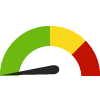



KS Counties
The distribution is based on data from 105 Kansas counties.

KS Value
(72.3%)
The regional value is compared to the Kansas state value.

HP 2030 Target
(58.4%)
<div>SDOH-07: Increase the proportion of the voting-age citizens who vote</div>
Public Health Preparedness Region: Kansas City Metro
Community / Crime & Crime Prevention
Value
Compared to:
Public Health Preparedness Region: Kansas City Metro Rate of Violent Crime per 1,000 Population
Public Health Preparedness Region: Kansas City Metro Rate of Violent Crime per 1,000 Population
3.9
Crimes per 1,000 population
(2022)
Compared to:





KS Value
(4.4)
The regional value is compared to the Kansas State value.

US Value
(3.6 in 2014)
The Kansas State value is compared to the US value. Under reporting of crime by some public safety jurisdictions may result in lower rates.

Prior Value
(4.0)
Prior Value compares a measured value with the previously measured value. Confidence intervals were not taken into account in determining the direction of the comparison.

Trend
This comparison measures the indicator’s values over multiple time periods.<br>The Mann-Kendall Test for Statistical Significance is used to evaluate the trend<br>over 4 to 10 periods of measure, subject to data availability and comparability.
Public Health Preparedness Region: Kansas City Metro
Community / Demographics
Value
Compared to:
Public Health Preparedness Region: Kansas City Metro Ratio of Children to Adults
Public Health Preparedness Region: Kansas City Metro Ratio of Children to Adults
29.9
Children per 100 Adults
(2020)
Compared to:





KS Value
(31.2)
The regional value is compared to the Kansas State value.

US Value
(28.9 in 2014)
The State value is compared to U.S. Value.

Prior Value
(30.1)
Prior Value compares a measured value with the previously measured value. Confidence intervals were not taken into account in determining the direction of the comparison.

Trend
This comparison measures the indicator’s values over multiple time periods.<br>The Mann-Kendall Test for Statistical Significance is used to evaluate the trend<br>over 4 to 10 periods of measure, subject to data availability and comparability.
Public Health Preparedness Region: Kansas City Metro Ratio of Elderly Persons and Children to Adults
Public Health Preparedness Region: Kansas City Metro Ratio of Elderly Persons and Children to Adults
52.8
Elderly persons & children per 100 adults
(2020)
Compared to:





KS Value
(57.7)
The regional value is compared to the Kansas State value.

US Value
(52.3 in 2017)
The regional value is compared to the national value.

Prior Value
(52.2)
Prior Value compares a measured value with the previously measured value. Confidence intervals were not taken into account in determining the direction of the comparison.

Trend
This comparison measures the indicator’s values over multiple time periods.<br>The Mann-Kendall Test for Statistical Significance is used to evaluate the trend<br>over 4 to 10 periods of measure, subject to data availability and comparability.
Public Health Preparedness Region: Kansas City Metro Ratio of Elderly Persons to Adults
Public Health Preparedness Region: Kansas City Metro Ratio of Elderly Persons to Adults
22.9
Elderly persons per 100 adults
(2020)
Compared to:





KS Value
(26.4)
The regional value is compared to the Kansas State value.

US Value
(21.8 in 2014)
The Kansas State Value is compared to the US Value.

Prior Value
(22.1)
Prior Value compares a measured value with the previously measured value. Confidence intervals were not taken into account in determining the direction of the comparison.

Trend
This comparison measures the indicator’s values over multiple time periods.<br>The Mann-Kendall Test for Statistical Significance is used to evaluate the trend<br>over 4 to 10 periods of measure, subject to data availability and comparability.
Public Health Preparedness Region: Kansas City Metro
Community / Social Environment
Value
Compared to:
Public Health Preparedness Region: Kansas City Metro People 65+ Living Alone
Public Health Preparedness Region: Kansas City Metro People 65+ Living Alone
30.5%
(2006-2010)
Compared to:
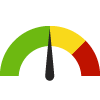
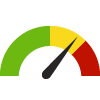



KS Counties
The distribution is based on data from 105 Kansas counties.

U.S. Counties
The distribution is based on data from 3,142 U.S. counties and county equivalents.

KS Value
(30.1%)
The regional value is compared to the Kansas state value.

US Value
(26.4% in 2018-2022)
The regional value is compared to the national value.
Public Health Preparedness Region: Kansas City Metro
Community / Transportation
Value
Compared to:
Public Health Preparedness Region: Kansas City Metro Households without a Vehicle
Public Health Preparedness Region: Kansas City Metro Households without a Vehicle
4.5%
(2006-2010)
Compared to:

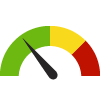



KS Counties
The distribution is based on data from 105 Kansas counties.

U.S. Counties
The distribution is based on data from 3,143 U.S. counties and county equivalents.

KS Value
(5.2%)
The regional value is compared to the Kansas state value.

US Value
(8.9%)
The regional value is compared to the national value.
Public Health Preparedness Region: Kansas City Metro Mean Travel Time to Work
Public Health Preparedness Region: Kansas City Metro Mean Travel Time to Work
21.0
Minutes
(2006-2010)
Compared to:
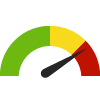
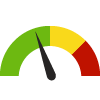



KS Counties
The distribution is based on data from 105 Kansas counties.

U.S. Counties
The distribution is based on data from 3,143 U.S. counties and county equivalents.

KS Value
(18.8)
The regional value is compared to the Kansas state value.

US Value
(25.2)
The regional value is compared to the national value.
Public Health Preparedness Region: Kansas City Metro Workers Commuting by Public Transportation
Public Health Preparedness Region: Kansas City Metro Workers Commuting by Public Transportation
0.7%
(2006-2010)
Compared to:





U.S. Counties
The distribution is based on data from 3,143 U.S. counties and county equivalents.

KS Value
(0.5%)
The regional value is compared to the Kansas state value.

US Value
(4.9%)
The regional value is compared to the national value.

HP 2030 Target
(5.3%)
Public Health Preparedness Region: Kansas City Metro Workers who Drive Alone to Work
Public Health Preparedness Region: Kansas City Metro Workers who Drive Alone to Work
82.6%
(2006-2010)
Compared to:





KS Counties
The distribution is based on data from 105 Kansas counties.

U.S. Counties
The distribution is based on data from 3,143 U.S. counties and county equivalents.

KS Value
(81.4%)
The regional value is compared to the Kansas state value.

US Value
(76.0%)
The regional value is compared to the national value.
Public Health Preparedness Region: Kansas City Metro Workers who Walk to Work
Public Health Preparedness Region: Kansas City Metro Workers who Walk to Work
1.9%
(2006-2010)
Compared to:
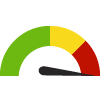




KS Counties
The distribution is based on data from 105 Kansas counties.

U.S. Counties
The distribution is based on data from 3,143 U.S. counties and county equivalents.

KS Value
(2.6%)
The regional value is compared to the Kansas state value.

US Value
(2.8%)
The regional value is compared to the national value.
Public Health Preparedness Region: Kansas City Metro
Economy / Employment
Value
Compared to:
Public Health Preparedness Region: Kansas City Metro Unemployed Workers in Civilian Labor Force
Public Health Preparedness Region: Kansas City Metro Unemployed Workers in Civilian Labor Force
6.7%
(November 2011)
Compared to:






KS Counties
The distribution is based on data from 105 Kansas counties.

U.S. Counties
The distribution is based on non-seasonally-adjusted data from 3,133 U.S. counties and county equivalents.

KS Value
(6.0%)
The regional value is compared to the Kansas state value.

Prior Value
(6.6%)
Prior Value compares a measured value with the previously measured value. Confidence intervals were not taken into account in determining the direction of the comparison.

Trend
This comparison measures the indicator’s values over multiple time periods.<br>The Mann-Kendall Test for Statistical Significance is used to evaluate the trend<br>over 4 to 10 periods of measure, subject to data availability and comparability.
Public Health Preparedness Region: Kansas City Metro
Economy / Government Assistance
Value
Compared to:
Public Health Preparedness Region: Kansas City Metro Households with Cash Public Assistance Income
Public Health Preparedness Region: Kansas City Metro Households with Cash Public Assistance Income
1.9%
(2006-2010)
Compared to:





KS Counties
The distribution is based on data from 105 Kansas counties.

U.S. Counties
The distribution is based on data from 3,143 U.S. counties and county equivalents.

KS Value
(2.3%)
The regional value is compared to the Kansas state value.

US Value
(2.5%)
The regional value is compared to the national value.
Public Health Preparedness Region: Kansas City Metro Kansas Medical Assistance Programs - Adults per 1000 Population, 20-64 Age-Group
Public Health Preparedness Region: Kansas City Metro Kansas Medical Assistance Programs - Adults per 1000 Population, 20-64 Age-Group
68.2
Per 1,000 population
(2022)
Compared to:




KS Value
(99.4)
The regional value is compared to the Kansas State value.

Prior Value
(30.2)
Prior Value compares a measured value with the previously measured value. Confidence intervals were not taken into account in determining the direction of the comparison.

Trend
This comparison measures the indicator’s values over multiple time periods.<br>The Mann-Kendall Test for Statistical Significance is used to evaluate the trend<br>over 4 to 10 periods of measure, subject to data availability and comparability.
Public Health Preparedness Region: Kansas City Metro Kansas Medical Assistance Programs - Children per 1000 Population, 0-19 Age-Group
Public Health Preparedness Region: Kansas City Metro Kansas Medical Assistance Programs - Children per 1000 Population, 0-19 Age-Group
358.7
Per 1,000 population
(2022)
Compared to:




KS Value
(465.1)
The regional value is compared to the Kansas State value.

Prior Value
(167.0)
Prior Value compares a measured value with the previously measured value. Confidence intervals were not taken into account in determining the direction of the comparison.

Trend
This comparison measures the indicator’s values over multiple time periods.<br>The Mann-Kendall Test for Statistical Significance is used to evaluate the trend<br>over 4 to 10 periods of measure, subject to data availability and comparability.
Public Health Preparedness Region: Kansas City Metro
Economy / Housing & Homes
Value
Compared to:
Public Health Preparedness Region: Kansas City Metro Homeowner Vacancy Rate
Public Health Preparedness Region: Kansas City Metro Homeowner Vacancy Rate
2.4%
(2006-2010)
Compared to:





KS Counties
The distribution is based on data from 105 Kansas counties.

U.S. Counties
The distribution is based on data from 3,143 U.S. counties and county equivalents.

KS Value
(2.0%)
The regional value is compared to the Kansas state value.

US Value
(2.4%)
The regional value is compared to the national value.
Public Health Preparedness Region: Kansas City Metro Homeownership
Public Health Preparedness Region: Kansas City Metro Homeownership
63.4%
(2006-2010)
Compared to:





KS Counties
The distribution is based on data from 105 Kansas counties.

U.S. Counties
The distribution is based on data from 3,143 U.S. counties and county equivalents.

KS Value
(62.6%)
The regional value is compared to the Kansas state value.

US Value
(58.5%)
The regional value is compared to the national value.
Public Health Preparedness Region: Kansas City Metro Renters Spending 30% or More of Household Income on Rent
Public Health Preparedness Region: Kansas City Metro Renters Spending 30% or More of Household Income on Rent
44.6%
(2006-2010)
Compared to:






KS Counties
The distribution is based on data from 105 Kansas counties.

U.S. Counties
The distribution is based on data from 3,143 U.S. counties and county equivalents.

KS Value
(44.4%)
The regional value is compared to the Kansas state value.

US Value
(50.9%)
The regional value is compared to the national value.

HP 2030 Target
(25.5%)
Public Health Preparedness Region: Kansas City Metro
Economy / Income
Value
Compared to:
Public Health Preparedness Region: Kansas City Metro Median Household Income
Public Health Preparedness Region: Kansas City Metro Median Household Income
$62,651
(2006-2010)
Compared to:





KS Counties
The distribution is based on data from 105 Kansas counties.

U.S. Counties
The distribution is based on data from 3,143 U.S. counties and county equivalents.

KS Value
($49,424)
The regional value is compared to the Kansas state value.

US Value
($51,914)
The regional value is compared to the national value.
Public Health Preparedness Region: Kansas City Metro Per Capita Income
Public Health Preparedness Region: Kansas City Metro Per Capita Income
$31,559
(2006-2010)
Compared to:





KS Counties
The distribution is based on data from 105 Kansas counties.

U.S. Counties
The distribution is based on data from 3,143 U.S. counties and county equivalents.

KS Value
($25,907)
The regional value is compared to the Kansas state value.

US Value
($27,334)
The regional value is compared to the national value.
Public Health Preparedness Region: Kansas City Metro
Economy / Poverty
Value
Compared to:
Public Health Preparedness Region: Kansas City Metro Children Living Below Poverty Level
Public Health Preparedness Region: Kansas City Metro Children Living Below Poverty Level
12.2%
(2006-2010)
Compared to:

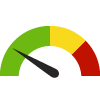



KS Counties
The distribution is based on data from 105 Kansas counties.

U.S. Counties
The distribution is based on data from 3,142 U.S. counties and county equivalents.

KS Value
(16.2%)
The regional value is compared to the Kansas state value.

US Value
(19.2%)
The regional value is compared to the national value.
Public Health Preparedness Region: Kansas City Metro Families Living Below Poverty Level
Public Health Preparedness Region: Kansas City Metro Families Living Below Poverty Level
6.6%
(2006-2010)
Compared to:





KS Counties
The distribution is based on data from 105 Kansas counties.

U.S. Counties
The distribution is based on data from 3,143 U.S. counties and county equivalents.

KS Value
(8.4%)
The regional value is compared to the Kansas state value.

US Value
(10.1%)
The regional value is compared to the national value.
Public Health Preparedness Region: Kansas City Metro People 65+ Living Below Poverty Level
Public Health Preparedness Region: Kansas City Metro People 65+ Living Below Poverty Level
6.9%
(2006-2010)
Compared to:





KS Counties
The distribution is based on data from 105 Kansas counties.

U.S. Counties
The distribution is based on data from 3,142 U.S. counties and county equivalents.

KS Value
(8.1%)
The regional value is compared to the Kansas state value.

US Value
(9.5%)
The regional value is compared to the national value.
Public Health Preparedness Region: Kansas City Metro People Living 200% Above Poverty Level
Public Health Preparedness Region: Kansas City Metro People Living 200% Above Poverty Level
76.0%
(2006-2010)
Compared to:





KS Counties
The distribution is based on data from 105 Kansas counties.

U.S. Counties
The distribution is based on data from 3,143 U.S. counties and county equivalents.

KS Value
(68.8%)
The regional value is compared to the Kansas state value.

US Value
(68.0%)
The regional value is compared to the national value.
Public Health Preparedness Region: Kansas City Metro People Living Below Poverty Level
Public Health Preparedness Region: Kansas City Metro People Living Below Poverty Level
10.1%
(2006-2010)
Compared to:






KS Counties
The distribution is based on data from 105 Kansas counties.

U.S. Counties
The distribution is based on data from 3,143 U.S. counties and county equivalents.

KS Value
(12.4%)
The regional value is compared to the Kansas state value.

US Value
(13.8%)
The regional value is compared to the national value.

HP 2030 Target
(8.0%)
Public Health Preparedness Region: Kansas City Metro Poverty Status by School Enrollment
Public Health Preparedness Region: Kansas City Metro Poverty Status by School Enrollment
6.8%
(2005-2009)
Compared to:





KS Counties
The distribution is based on data from 105 Kansas counties.

U.S. Counties
(2018-2022)
The distribution is based on data from 3,132 U.S. counties and county equivalents.

KS Value
(10.2% in 2018-2022)
The regional value is compared to the Kansas State value.

US Value
(12.4% in 2018-2022)
The regional value is compared to the national value.
Public Health Preparedness Region: Kansas City Metro Uninsured Adult Population Rate
Public Health Preparedness Region: Kansas City Metro Uninsured Adult Population Rate
11.3%
(2021)
Compared to:





KS Value
(13.4%)
The regional value is compared to the Kansas State value.

US Value
(12.0% in 2016)
The state value is compared to the U.S. value.

Prior Value
(9.9%)
Prior Value compares a measured value with the previously measured value. Confidence intervals were not taken into account in determining the direction of the comparison.

Trend
This comparison measures the indicator’s values over multiple time periods.<br>The Mann-Kendall Test for Statistical Significance is used to evaluate the trend<br>over 4 to 10 periods of measure, subject to data availability and comparability.
Public Health Preparedness Region: Kansas City Metro Young Children Living Below Poverty Level
Public Health Preparedness Region: Kansas City Metro Young Children Living Below Poverty Level
14.6%
(2006-2010)
Compared to:





KS Counties
The distribution is based on data from 105 Kansas counties.

U.S. Counties
The distribution is based on data from 3,140 U.S. counties and county equivalents.

KS Value
(20.5%)
The regional value is compared to the Kansas state value.

US Value
(22.3%)
The regional value is compared to the national value.
Public Health Preparedness Region: Kansas City Metro
Education / Educational Attainment
Value
Compared to:
Public Health Preparedness Region: Kansas City Metro People 25+ with a Bachelor's Degree or Higher
Public Health Preparedness Region: Kansas City Metro People 25+ with a Bachelor's Degree or Higher
41.5%
(2006-2010)
Compared to:





KS Counties
The distribution is based on data from 105 Kansas counties.

U.S. Counties
The distribution is based on data from 3,143 U.S. counties and county equivalents.

KS Value
(29.3%)
The regional value is compared to the Kansas state value.

US Value
(27.9%)
The regional value is compared to the national value.
Public Health Preparedness Region: Kansas City Metro People 25+ with a High School Diploma or Higher
Public Health Preparedness Region: Kansas City Metro People 25+ with a High School Diploma or Higher
92.1%
(2006-2010)
Compared to:





KS Counties
The distribution is based on data from 105 Kansas counties.

U.S. Counties
The distribution is based on data from 3,143 U.S. counties and county equivalents.

KS Value
(89.2%)
The regional value is compared to the Kansas state value.

US Value
(85.0%)
The regional value is compared to the national value.
Public Health Preparedness Region: Kansas City Metro
Education / School Environment
Value
Compared to:
Public Health Preparedness Region: Kansas City Metro Student-to-Teacher Ratio
Public Health Preparedness Region: Kansas City Metro Student-to-Teacher Ratio
15.5
Students per teacher
(2009-2010)
Compared to:





KS Counties
The distribution is based on data from 105 Kansas counties.

U.S. Counties
The distribution is based on data from 3,143 U.S. counties and county equivalents.

KS Value
(13.7)
The regional value is compared to the Kansas state value.

Prior Value
(14.9)
Prior Value compares a measured value with the previously measured value. Confidence intervals were not taken into account in determining the direction of the comparison.
Public Health Preparedness Region: Kansas City Metro
Environmental Health / Built Environment
Value
Compared to:
Public Health Preparedness Region: Kansas City Metro Liquor Store Density
Public Health Preparedness Region: Kansas City Metro Liquor Store Density
18.8
Stores per 100,000 population
(2009)
Compared to:






KS Counties
The distribution is based on data from 92 Kansas counties.

U.S. Counties
The distribution is based on data from 2,383 U.S. counties and county equivalents.

KS Value
(22.0)
The regional values are compared to the Kansas State value.

US Value
(10.1)
The regional value is compared to the national value.

Prior Value
(18.4)
Prior Value compares a measured value with the previously measured value. Confidence intervals were not taken into account in determining the direction of the comparison.
Public Health Preparedness Region: Kansas City Metro
Environmental Health / Toxins & Contaminants
Value
Compared to:
Public Health Preparedness Region: Kansas City Metro Public Water Supply - Percent of Population Served Unaffected by SDWA Coliform Violations
Public Health Preparedness Region: Kansas City Metro Public Water Supply - Percent of Population Served Unaffected by SDWA Coliform Violations
100.0%
Percentage
(2022)
Compared to:




KS Value
(99.9%)
The regional value is compared to the Kansas State value.

Prior Value
(100.0%)
Prior Value compares a measured value with the previously measured value. Confidence intervals were not taken into account in determining the direction of the comparison.

Trend
This comparison measures the indicator’s values over multiple time periods.<br>The Mann-Kendall Test for Statistical Significance is used to evaluate the trend<br>over 4 to 10 periods of measure, subject to data availability and comparability.
Public Health Preparedness Region: Kansas City Metro Public Water Supply - Percent of Population Served Unaffected by SDWA Nitrate Violations
Public Health Preparedness Region: Kansas City Metro Public Water Supply - Percent of Population Served Unaffected by SDWA Nitrate Violations
100.0%
Percentage
(2022)
Compared to:




KS Value
(99.7%)
The regional value is compared to the Kansas State value.

Prior Value
(100.0%)
Prior Value compares a measured value with the previously measured value. Confidence intervals were not taken into account in determining the direction of the comparison.

Trend
This comparison measures the indicator’s values over multiple time periods.<br>The Mann-Kendall Test for Statistical Significance is used to evaluate the trend<br>over 4 to 10 periods of measure, subject to data availability and comparability.

